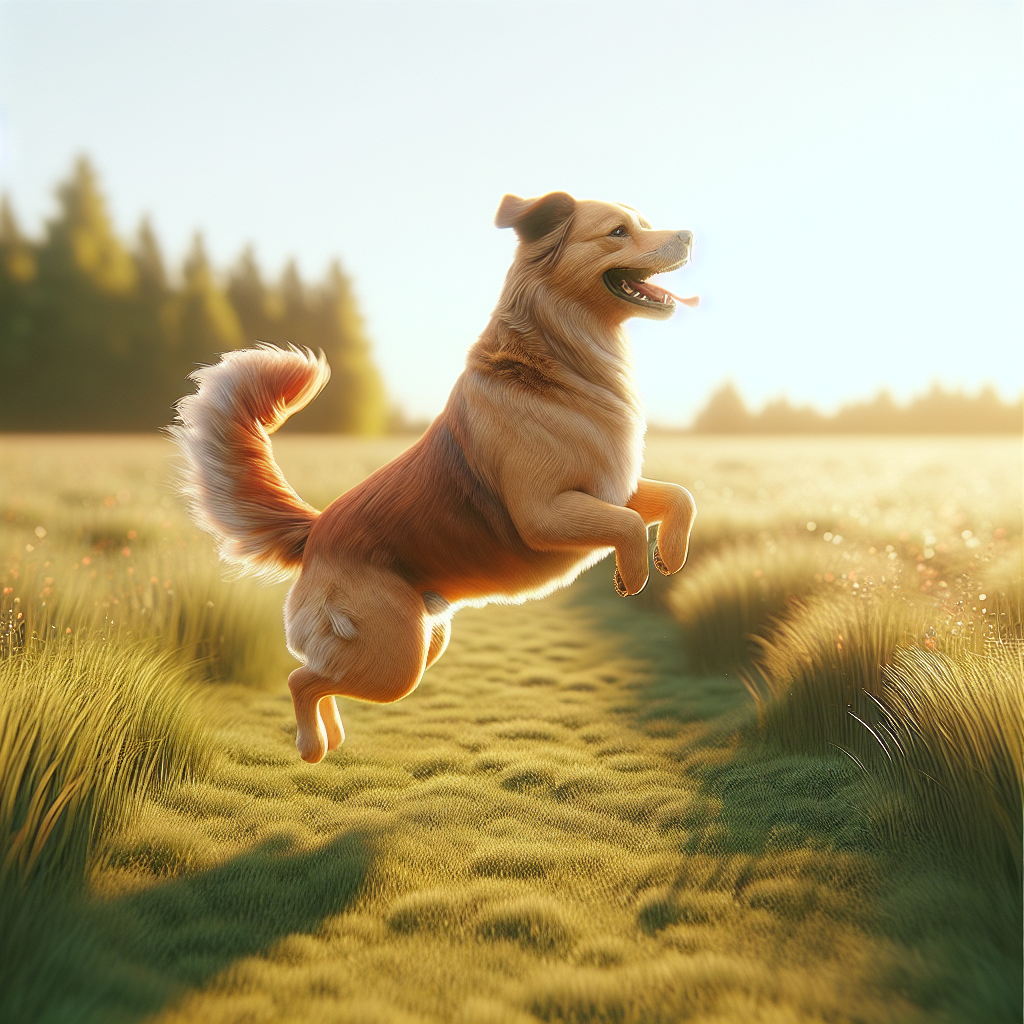Introduction to Fleas: The Unwanted Guests

Alright, folks, let’s dive into the gritty world of fleas—those sneaky little buggers that make life miserable for your furry friend. If you’ve got a dog, chances are you’ve dealt with fleas at some point. They’re like uninvited guests who crash in, make a mess, and are really hard to kick out. These tiny vampires feed on your dog’s blood, and boy, do they know how to throw a party on your pup’s skin. You’ll see ‘em hopping around, having the time of their lives while your poor dog scratches away like there’s no tomorrow.
Now, you might think, “How the heck do I know if my dog’s got fleas?” That’s where flea infestation symptoms in dogs come in handy. You’ll notice your dog scratching, biting, and chewing more than usual. And no, it’s not just a bad hair day. Fleas like to hang out in warm places—think the neck, behind the ears, and the belly. So, you gotta be Sherlock Holmes here, checking for flea dirt or even the fleas themselves. It’s like a game of hide and seek, but trust me, it’s not fun.
Recognizing the Signs: Is Your Dog a Flea Motel?
Imagine this: your dog’s the unsuspecting host, and fleas are the rowdy guests that just don’t know when to leave. They multiply faster than rabbits, turning your dog into a flea motel. You’ll spot the signs—constant scratching, red bumps, and even hair loss. It’s like they’re leaving a trail of chaos behind. These symptoms are a cry for help, telling you to step up and take action.
When it comes to flea infestation symptoms in dogs, the itching is just the beginning. Flea dirt, which is basically flea poop, looks like black pepper sprinkled on your dog’s skin. Gross, I know. But that’s how you know the party’s in full swing. You might even see your dog acting restless or irritable. Wouldn’t you if you had tiny critters biting you all the time?
First Steps: What to Do When You Spot Fleas
So, you’ve spotted fleas. Now what? First things first, don’t panic. Take a deep breath and roll up your sleeves. You’re going to need a plan. Start by grabbing an over-the-counter flea medication. These are like the bouncers who’ll kick those fleas out for good. There’s a whole arsenal out there—tablets, collars, topical treatments. Just pick your weapon of choice.
But hold on, it doesn’t stop there. You’ve also got to treat your home. Fleas are sneaky—hiding in carpets, couches, and even your dog’s bed. Think of it as a full-scale invasion. Vacuum like there’s no tomorrow, wash pet bedding, and maybe even spray some flea-killer around the house. It’s a war zone, my friends, but you’re in command.
Bath Time: A Soapy Solution
Let’s talk bath time. Fleas hate water—makes ‘em cling for dear life. So grab some dog-friendly shampoo and get to scrubbing. Bathing dogs for fleas isn’t just about getting them clean; it’s about washing away those pesky hitchhikers. Make sure the water’s warm, and take your time. Lather up, rinse, and repeat if you must.
Oh, and don’t forget the flea comb effectiveness. These little combs are worth their weight in gold. They help you snag any lingering fleas and their eggs. It’s like combing through a haystack for needles, but every flea you catch is a victory. After the bath, give your pup a good once-over with the comb. It’s oddly satisfying and weirdly therapeutic.
Home Remedies: Tried and True Tricks
Now, if you’re into natural flea remedies for dogs, I’ve got a few tricks up my sleeve. Some folks swear by homemade flea sprays. A mix of vinegar and water might do the trick—fleas hate the smell. Just spritz a little on your dog’s coat, and watch those fleas make a run for it.
Another trick? Essential oils. A drop of lavender or cedar oil can act as a natural repellent. Just be careful—some oils aren’t safe for dogs, so do your homework. You wouldn’t want to trade one problem for another.
Then there’s the classic approach—flea prevention tips for dogs. Keep your yard clean and trimmed, avoid contact with stray animals, and regularly check your dog for any signs of fleas. Prevention is the best medicine, they say.
And there you have it, folks—your guide to battling fleas, those pesky little freeloaders. It’s not glamorous, but your dog’s worth every minute. So roll up your sleeves, get in the trenches, and show those fleas who’s boss. Thanks for sticking with me through this flea circus. Good luck, and may the flea force be with you!
Checking Your Dog for Fleas
Alright, let’s dive right into it. You’ve got a dog and, surprise surprise, fleas have turned up like unwanted guests at a party. Checking your dog for fleas isn’t brain surgery, but it does need some focus. You don’t want to miss these critters playing hide and seek in your dog’s fur. First things first, grab that flea comb. Yes, that fine-toothed wonder. You’re about to become Sherlock Holmes, but for fleas. Start by running the comb through your dog’s fur, especially around the neck and tail—fleas love those spots. Keep an eye out for tiny black specks. If you see any, you’ve found flea dirt—flea poop, if you will. It’s a sure sign these little pests are having a ball on your dog.
Now, here’s the kicker: checking isn’t a one-time gig. You have to be persistent. Make it part of your routine, maybe once a week. It’s like doing laundry—nobody loves it, but it’s gotta be done. And hey, your dog might even enjoy the extra attention. So, next time someone asks “how to check my dog for fleas,” you’ll have the lowdown.
Using Natural Remedies
Natural flea remedies for dogs are the unsung heroes in this battle. They’re like that quiet friend who always has a trick up their sleeve. You’ve probably got some of these remedies sitting in your kitchen right now. Let’s start with a classic: apple cider vinegar. Mix it with water and spray it on your dog. Fleas hate the smell. Another one is lemon. Yep, you heard me. Boil a few lemon slices, let it cool, then apply it to your dog’s fur.
But, don’t get carried away. It’s easy to go overboard and end up with a dog that smells like a salad. Remember, sometimes less is more. You could even try rosemary or lavender as a natural deterrent. Just sprinkle it around your home, and fleas might think twice about squatting there.
You might wonder how effective these natural remedies are. Well, they’re not a magic bullet. Think of them as part of a broader strategy. They’re like the cavalry, not the whole army. But in a world where fleas are the enemy, every little bit helps.
Choosing the Right Flea Shampoo
Choosing the best flea shampoo for dogs is like standing in a cereal aisle. So many choices, and all you want is something that works. You don’t need a fancy label or an exotic scent. What you need is something that’ll give those fleas the boot. Your dog’s skin is sensitive, so you’ll want a shampoo that’s gentle but effective. Look for something with natural ingredients—something that won’t turn bath time into a chemical bath.
When you find the right one, make bath time an event. Not just a chore, but a chance to bond with your dog. I know, I know. Bathing a dog isn’t exactly the highlight of anyone’s day. But with the right shampoo, it doesn’t have to be a disaster. You might even find it therapeutic.
And hey, once you find that golden shampoo, you’ll be the one folks come to for advice on the best flea shampoo for dogs. Who knew you’d become the neighborhood expert?
Applying Topical Treatments
Topical treatments are the heavyweights in the flea-fighting world. When all else fails, these little tubes of wonder pack a punch. Applying flea treatments on dogs is like strapping on armor. You’re preparing for the battle ahead. These treatments usually come in liquid form, and you apply them directly to your dog’s skin—usually between the shoulder blades. Follow the instructions, though. This isn’t the time to be a rebel.
Be consistent. Most treatments need to be reapplied every month. You wouldn’t skip a month brushing your teeth, right? Same deal here. Set a reminder, use your phone, whatever it takes.
With these treatments, you’re not just treating your dog. You’re telling those fleas they picked the wrong dog to mess with. You’re the underdog in this fight, but with the right tools, you’ve got a fighting chance.
Combating Fleas in Your Home
Now, onto the home front. Fleas love to make themselves comfy in your home. They’re like that cousin who visits and never leaves. If you’re serious about how to get rid of fleas in my house, you’ve got to roll up your sleeves. Start with a good vacuum. Get into those carpets, corners, and any cozy nook a flea might hide.
And don’t stop there. Wash your dog’s bedding in hot water. Use a flea spray if you have to. You’re evicting these squatters, and they’re not getting their security deposit back.
You might not love cleaning, but think of it as reclaiming your territory. It’s your home, after all, not a flea motel.
Thanks for sticking it out with me on this flea-fighting journey. It’s not always easy, but you’re doing amazing. Give your dog a belly rub from me, and keep at it. You’ve got this.
Natural Remedies: Going the DIY Route
Ah, fleas—the uninvited guests on your dog’s back. They’re pesky little critters, aren’t they? They hop around, causing chaos, and frankly, they’ve got more spring than a trampoline. So, what’s a pet parent to do? Some folks swear by natural remedies. You know, the kind you can whip up in your kitchen on a lazy Sunday. Ever tried apple cider vinegar? Yeah, that tangy stuff you use in salad dressings. Turns out, it’s a bit of a miracle worker for DIY flea remedies for dogs. You mix it with water, maybe a 50/50 blend, and spritz it on your furry friend. Don’t soak them like they’re in a bathtub, just a light mist. Fleas hate the stuff.
Then there’s the old lemon trick. Slice a lemon, let it steep in boiling water overnight, and voila—flea spray. Apply it on your dog’s fur and watch those fleas flee. But hey, don’t go overboard. Your dog doesn’t need to smell like a citrus farm.
Regular Grooming and Maintenance: Consistency Wins
Let’s talk grooming. It’s like brushing your teeth—essential, daily, and non-negotiable. Imagine your dog’s fur as a battlefield, and your brush is the weapon of choice. Daily brushing, your new daily ritual. It’ll help get rid of those freeloading fleas. They’re tiny, but they’re persistent. Use a fine-toothed comb, the kind that’s made for fleas. It’s not just about grooming—it’s about control. How to brush fleas out of dog fur? Start at the head and work your way down. Be thorough. You might even find yourself humming a tune as you brush away those pesky critters.
Now, let’s not forget the bath. Warm water, a bit of dog shampoo, maybe some essential oils if you’re feeling fancy. Keep it simple, though. You’re not running a spa. Just clean, rinse, and repeat.
Yard and Home: Extending the War Zone
Your yard is another battlefield. Flea control in yard and home is crucial. Fleas love the outdoors. They’re like tiny, annoying campers. But your yard is your territory. Mow the lawn, trim the bushes, and keep things tidy. A neat yard is a flea’s worst nightmare.
Inside, vacuum like you’re in a cleaning competition. Carpets, rugs, and furniture—they’re all fair game. Fleas think they can hide outside—think again. They’re sneaky, but you’re smarter. Use a steam cleaner if you’ve got one. The heat will send those fleas packing.
Also, consider some diatomaceous earth. Spread it around, especially in those dark corners where fleas love to hide. It’s natural and non-toxic, but it’s like walking on a bed of nails for fleas.
When to Call the Vet: Knowing Your Limits
Sometimes, you need to call in the cavalry. It’s not admitting defeat; it’s knowing your limits. If your dog’s scratching like it’s auditioning for a Shakespearean tragedy, then it’s time. Don’t wait till the dog’s in a Shakespearean tragedy. Signs to take dog to vet for fleas include red, irritated skin or hair loss. Your vet’s seen it all before. They’ve got the meds and the wisdom.
Prescription treatments can tackle the problem head-on. They’re potent, but they’re effective. A quick visit, maybe a shot or two, and your dog’s well on its way to being flea-free. It might cost a pretty penny, but peace of mind? Priceless.
Long-Term Prevention: The Final Frontier
Now, let’s talk prevention—the final frontier. This is where you plan ahead, so you’re not repeating history. You want to be a step ahead of those fleas. Best long-term flea prevention involves regular treatments. Monthly spot-ons, collars, or even oral meds. They’re your dog’s shield against future invaders.
Home maintenance for flea prevention is also key. Keep things clean and clutter-free. It’s about creating an environment where fleas can’t thrive. Regular checks, even when you think you’re in the clear, because those little pests are sneaky.
In the end, remember this: You’re the hero in your dog’s story. You’ve got this. Your dog’s counting on you, and you’re not about to let them down. Thanks for hanging out with me in this flea-busting adventure. Give yourself a pat on the back for being such a dedicated pet parent. Cheers!
Quick Takeaways:
Alright, flea warriors, here’s the down and dirty on how to get rid of fleas on my dog. First, check your dog for fleas. It’s not hard—just a bit like playing detective. Arm yourself with a flea comb and get to work. You’ll find those fleas hiding in the fur, especially around the neck and tail.
Next up, flea shampoos. You’ll stand in the pet store aisle, feeling like you’re about to make the biggest decision of your life. Don’t stress. Pick one that’s gentle on your dog’s skin. Bathing dogs for fleas is a messy job but a crucial part of your battle plan.
Now, natural flea remedies for dogs can be handy. Some folks swear by apple cider vinegar flea treatments or homemade flea sprays. But hey, don’t bet the farm on them. They might work, but sometimes you need to call in the big guns—over-the-counter flea medication.
And don’t forget about your house. Fleas love your carpet like it’s a five-star hotel. Vacuum like your life depends on it. Flea prevention tips for dogs? Keep things clean, treat your dog regularly, and you’ll be a step ahead.
Give your dog a pat for being patient through all this. Together, you’ll kick those fleas to the curb.
FAQs:
1.
How do I know if my dog has fleas?
Spotting flea infestation symptoms in dogs is key. Look for excessive scratching, biting, or licking. Fleas leave behind “flea dirt,” which looks like tiny black specks. Use a flea comb to check for these unwelcome guests. If you spot fleas in the comb, it’s time to take action.
2.
What are some natural flea remedies for dogs?
Natural flea remedies can be a fun science experiment. Some folks use apple cider vinegar mixed with water as a spray. Others swear by essential oils like lavender or cedarwood. But remember, not all dogs react the same. Test a small area first and keep an eye on your pup.
3.
How to get rid of fleas on my dog with over-the-counter solutions?
Over-the-counter flea medication is your trusty sidekick. These treatments come in collars, topical applications, and pills. Follow the instructions like you’re reading a treasure map. Apply the treatment on the back of the neck, where your dog can’t lick it.
4.
Is bathing dogs for fleas effective?
Yes, but there’s a catch—it’s not the ultimate solution. Bathing helps remove fleas and soothe irritated skin. Use the best flea shampoo for dogs, something gentle yet effective. Follow up with a thorough rinse. Fleas hate water, so make it a regular affair.
5.
How to get rid of fleas in my house?
Cleaning is your ticket to freedom. Fleas love carpets, furniture, and bedding. Vacuum daily and wash everything washable. Consider homemade flea sprays for furniture. A mix of water, vinegar, and lemon might do the trick. Persistent infestations might require professional pest control.
Conclusion:
You’ve reached the end of this flea-fighting journey. How to get rid of fleas on my dog isn’t just a one-time gig—it’s a lifestyle. You’ve learned to spot flea infestation symptoms in dogs, tried natural flea remedies, and embraced the power of over-the-counter flea medication.
It’s not just about your dog. Your home needs attention too. Vacuum like a maniac and keep things clean. Prevention is your best friend. Regular treatments and a watchful eye will keep those fleas from setting up camp again.
So, here’s to you—the unsung hero in your dog’s life. You’ve tackled the flea menace with grit and determination. Give yourself a pat on the back. Your dog’s looking at you with those big eyes, grateful for your efforts. Keep at it, and know that you’re doing a grand job. Thanks for hanging out in this flea-busting saga. Until the next adventure!
References:
1. https://www.webmd.com/pets/remove-fleas-from-pet
2. https://www.petmd.com/dog/general-health/how-to-handle-fleas-on-dogs
3. https://www.akc.org/expert-advice/health/how-to-get-rid-of-fleas/
4. https://www.health.harvard.edu/staying-healthy/how-to-get-rid-of-fleas-protecting-your-home-and-pets
5. https://www.pawlicy.com/blog/how-to-get-rid-of-fleas-on-dogs/
Our solution eradicates fleas on contact without harmful chemicals, ensuring a safe environment for your pets and family. Easy to use and highly effective, SayByeBugs helps you maintain a flea-free home. Learn more and order today at SayByeBugs.com
Our solution eradicates fleas on contact without harmful chemicals, ensuring a safe environment for your pets and family. Easy to use and highly effective, SayByeBugs helps you maintain a flea-free home. Learn more and order today at SayByeBugs.com








